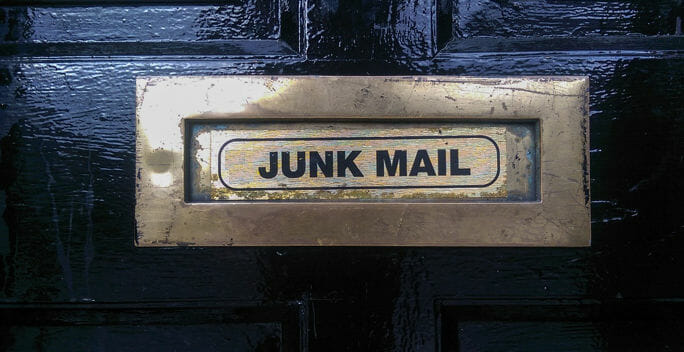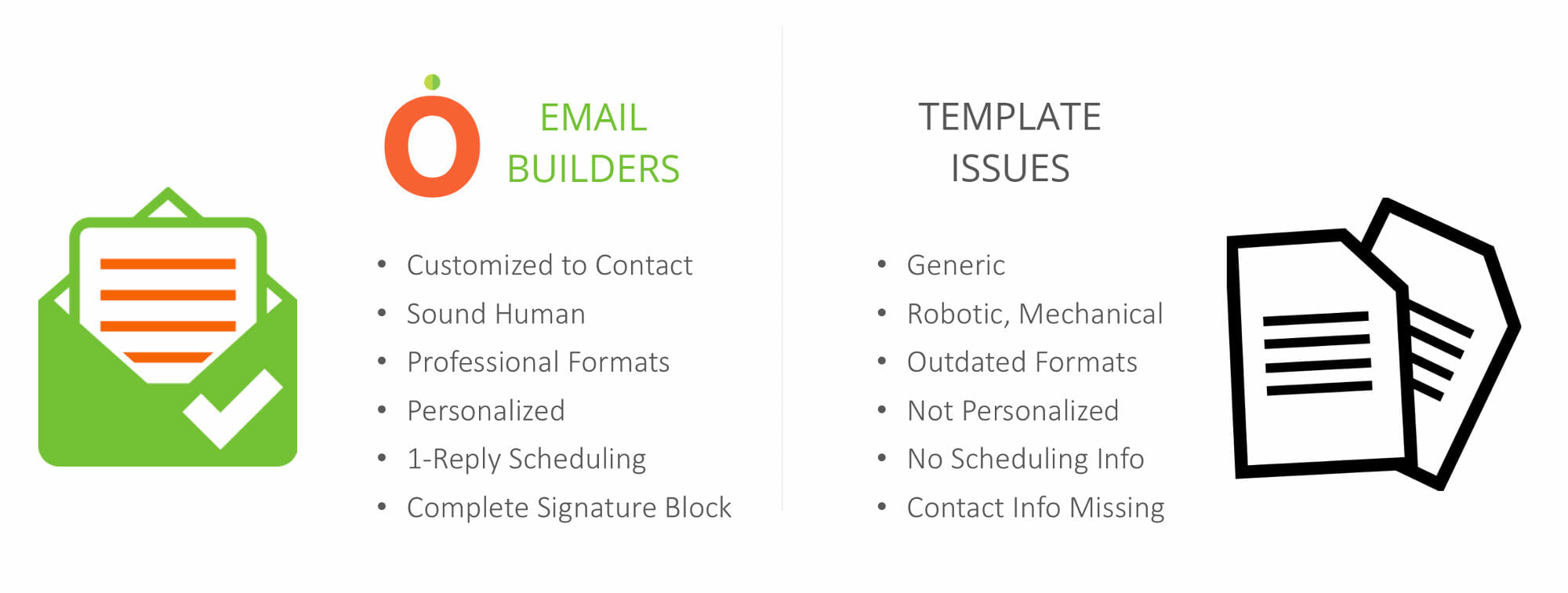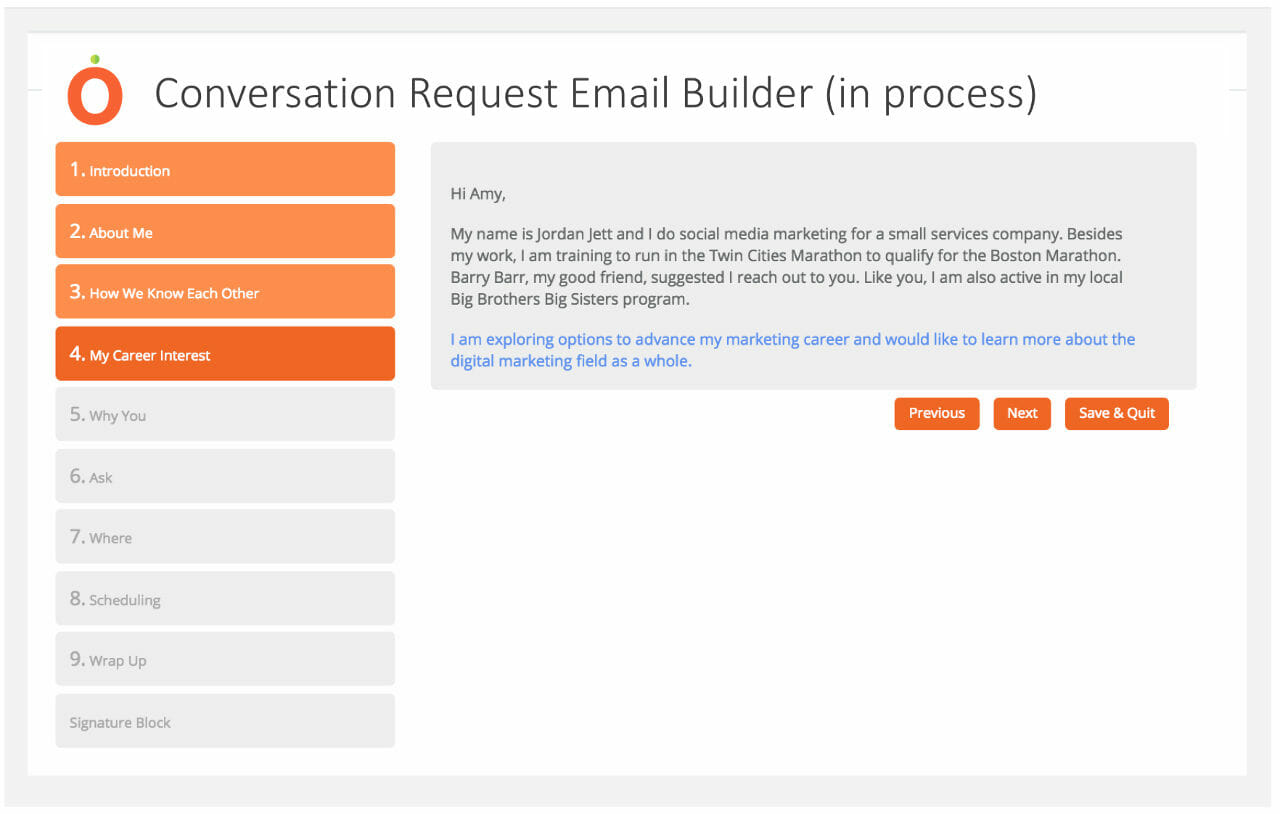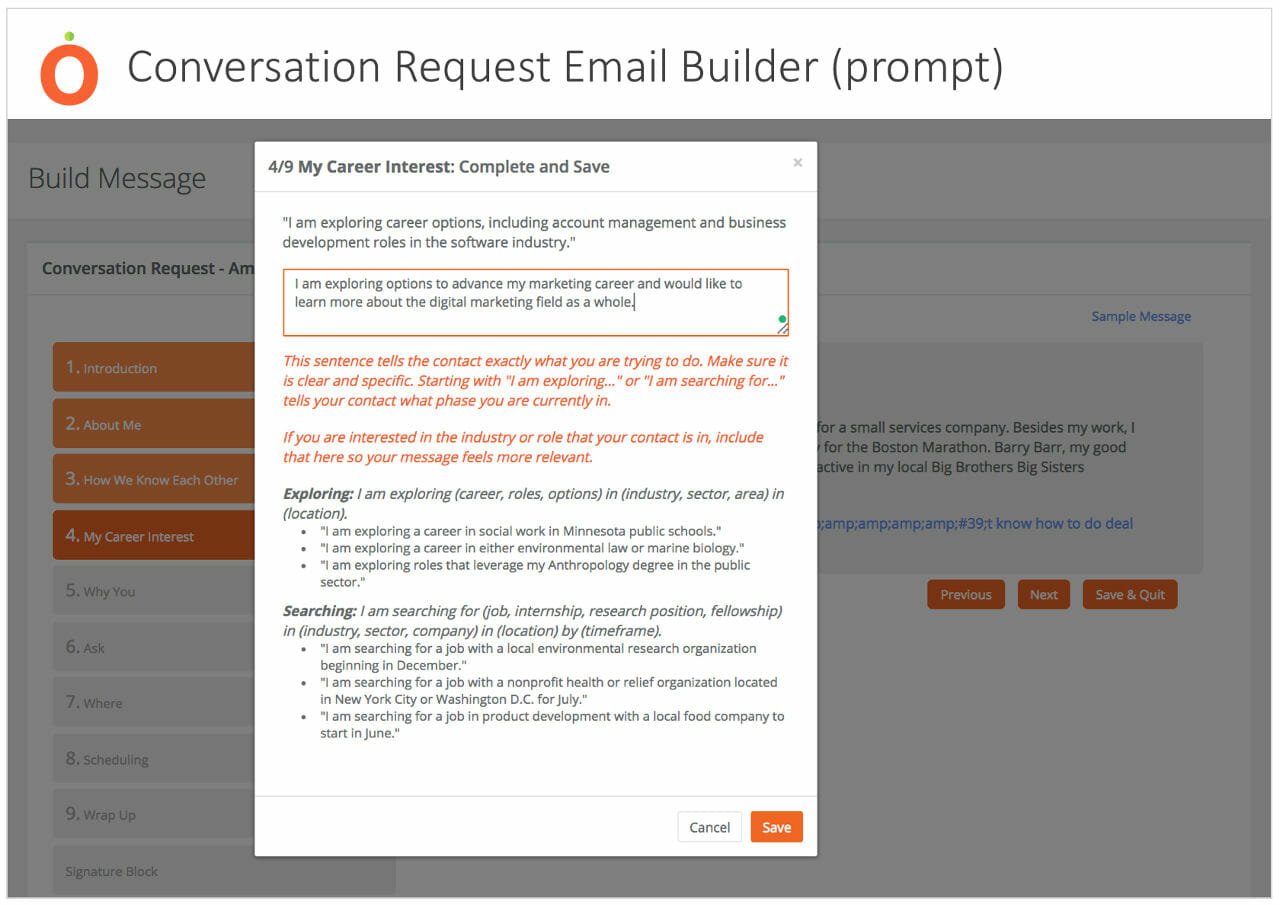
Here’s the good news: your network contains people who can help you land your dream job or take that next career step. They are there and ready to help.
The bad news? Reaching out to contacts in your network can be intimidating. Standing between you and reaching out to them is a blank screen, a blinking cursor, and an unwritten outreach email.
Writing a professional networking email to someone you don’t know well can feel high stakes. It’s tempting to copy and paste someone else’s networking email template rather than to write your own email. You assume that they know better than you—but trusting an email template can backfire on you.
The reality is that email templates end professional relationships before they begin. And often, you won’t even know it happened.
Luckily, there’s an easy way to write your own custom networking email that works, even if you’ve never written one before.
How do you know if your networking email template is any good?
Writing a networking email from scratch is nerve-wracking.
Countless outreach email templates are just a Google search away. Maybe you click on a few search results to see some examples, and they all seem better than what you’d write. The next thing you know, you are copying one into your email and sending it off with few alterations.
Unlike many things you find online, there are no reviews, ratings, or studies for how effective a particular networking email template is. This is why picking some random networking email example can be risky.

The three biggest problems with networking email templates
Here’s why networking email templates just don’t cut it:
1. Generic, disingenuous content
Every professional has received form letters and templated emails. It’s likely they have even sent a few themselves. Most people recognize a generic email when they see one, and delete it before reading it, just like spam.
Even worse, the person you’re reaching out to might recognize the exact email template you used, which makes you come off as insincere—all before you’ve even gotten a chance to talk to them.
Email templates are too easy to spot. If you can tell from the robotic tone that a real person didn’t write it, then so can your contact. That makes your request to connect easy to ignore, and your chance at a conversation with your contact goes out the door.
2. Key information missing
It’s a myth that shorter emails are always better.
Nearly all the networking emails we analyzed at MANGO were missing key information the reader needed—basic things like: who, what, when, where, and why.
An incomplete networking email template can set off a series of unnecessary back-and-forths. Each one attempts to get information that should have been present in the first email. Busy people don’t have the time or mental energy for that.
If you’re reaching out and asking someone for advice, it’s your job to make it as easy as possible for them.
3. Bad formatting
Here’s a tip to keep in your back pocket: emails are meant to be skimmed, not read.
Professionals expect emails to be structured so they can scan them quickly rather than read them word for word. Many email templates are written in one big block of text with little or no formatting at all. Others are written like a five-paragraph essay.
These mistakes force your contact to hunt for information that should be easily found. Finding a needle in a haystack is frustrating for everyone. Using someone else’s email as a template may seem like a helpful shortcut, but more often than not, you’re only wasting your time, as well as your contact’s time.
The smart alternative to networking email templates
Luckily, there is an alternative to using an email template—one that doesn’t include staring anxiously at a blank screen.
You can write your own custom email quickly using an Email Builder.

MANGO’s free Email Builders coach you step-by-step on how to write different types of networking emails. It ensures that you include all the right information in the right places, without forgetting anything.
Email Builders give you the best of both worlds: they give the polish and professionalism sought after in email templates, and the personalization and customization of written-from-scratch emails.
It’s so easy that anyone—even us “non-writers”—can make a great first impression.
Networking emails made easy with Email Builders
As Kaytie Zimmerman stated in Forbes, MANGO, “makes knowing what to say while networking simple.”
MANGO, our free networking tool, makes it easy to get face-to-face with your network. That includes Email Builders for the most common networking emails and situations. Each Email Builder is designed to create a perfectly tailored email in the right format, with the right information.
With MANGO’s Email Builders, you’ll easily write Conversation Request Emails and Thank You Follow-Up Emails. MANGO’s Email Builders can also help you write:
- Event Follow-Up Email
- Check-In Email
- Meeting Confirmation Email
Try MANGO’s free Conversation Request Email Builder for yourself to see just how easy it is to draft a quick, customized networking email.
MANGO Email Builders in action
Your contact expects certain pieces of information from you. It can be confusing and time-consuming to try to remember all of the pieces, let alone what goes where.
Complete information in a skimmable format
MANGO’s Email Builders provide the right structure for every type of networking email so that your message includes all the right information in the right places. The formatting also keeps you from writing more than you need to. When it’s done, you’re done.
For example, let’s say you want to reach out to ask for a conversation with someone in your network. You’d select MANGO’s free Conversation Request Email Builder.
Here is what a partially built Conversation Request Email looks like in MANGO:

The formula for the Conversation Request Email is on the left. As you can see, this type of message should contain nine key, sequential ingredients, finished off with a signature block.
Most networking emails we analyzed contained only half of these ingredients. The request sentence was often one of them. A conversation request without an actual request is not a conversation request at all!
Using Email Builders, you don’t have to worry about missing anything. No more pouring over your email draft, only to send it off, read it later, and say to yourself, “I should have included x!” or, “maybe I should have reworded that part.” Networking emails built in MANGO’s Email Builder will always contain everything they need.
Sentence prompts that guide you through writing, step-by-step
Email Builders helps you customize your email without the guesswork. They prompt you to write your email, one sentence at a time. Each prompt contains the goal of the sentence as well as examples to make sure you get it right.

This allows you to write each sentence in your own words without writer’s block. Email Builder coaching keeps you from struggling with what to say or how to say it. These prompts are a godsend whether English is your second language or your first!
The polished product: your complete, professional, customized email
Here is what the Conversation Request Email looks like when you are done building it:

This email may appear longer than you expected. This is because the top half contains the conversation request while the bottom half contains logistical information on when, where, and how to meet up. This makes it easy for your contact to assess your request, check their schedule, and reply. Including this information in a request email is common practice today since it saves everybody time.
MANGO provides a private space to draft your networking emails. When your message is ready, simply copy and paste your finished product into email or Linkedin message, and hit send.
Request a conversation and start networking today
With MANGO’s FREE Email Builders, you’ll never have to worry about writer’s block or gamble on a generic email template again. MANGO helps you make every networking message your own.
There’s no time like the present. Reaching out to someone in your network might be intimidating the first few times, but it doesn’t have to be hard.
Start writing your Conversation Request email now to get your career moving.
Can we send you a useful email?
More articles like this one, tips you can really use, and advice that makes your next career move easier.
Sue Wollan Fan is the Founder & CEO of MANGO, a free networking tool whose mission is to expand opportunities for all by making networking easier, accessible, and more human. She has mentored hundreds to succeed professionally while serving as a corporate executive, nonprofit leader, tech entrepreneur, and mother of three. She is passionate about helping others do work that matters.